Pocky
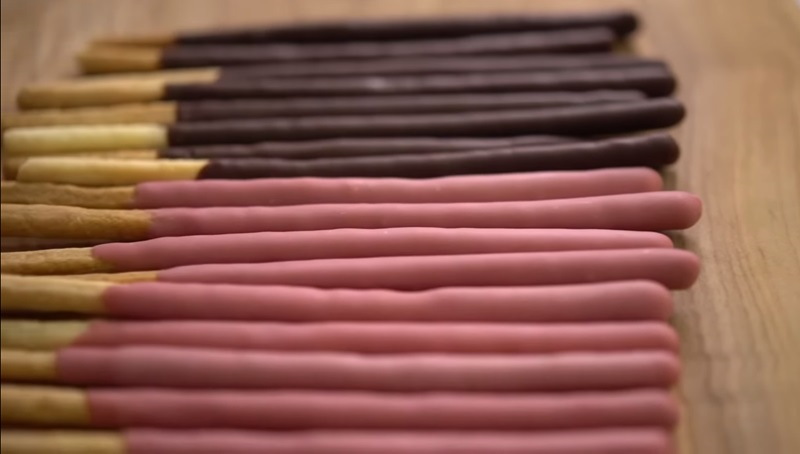
Pocky is a sweet Japanese snack made by the Ezaki Glico food company. Invented by Yoshiaki Koma, it features biscuit sticks coated in a variety of flavors. The name "Pocky" is derived from the Japanese term "pokkiri," mimicking the sound when the snack is cracked. The coatings include an array of flavors, such as chocolate, almond, strawberry, banana, coconut, and more.
Konpeitō
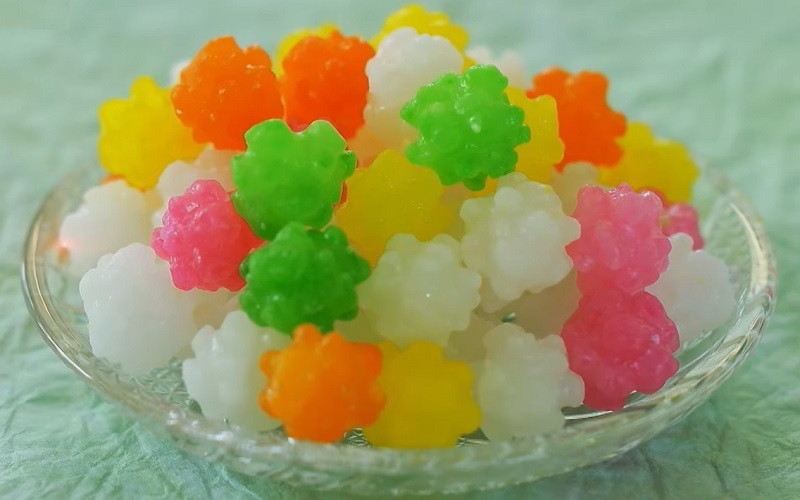
Konpeitō is a traditional Japanese snack that has been enjoyed for centuries. These bite-sized treats are made by coating a small sugar crystal with layers of colored syrup, resulting in a shiny and vibrant appearance. With their unique texture and delicate sweetness, konpeitō has become a beloved snack for people of all ages. The process of creating konpeitō is meticulous and requires great skill. It begins with heating sugar syrup to a high temperature and then pouring it onto a tray to cool and harden. The hardened sugar is then broken into small fragments and placed in a rotating drum. As the drum spins, layers of syrup are gradually added, resulting in a smooth and glossy surface.
Kaki no tane
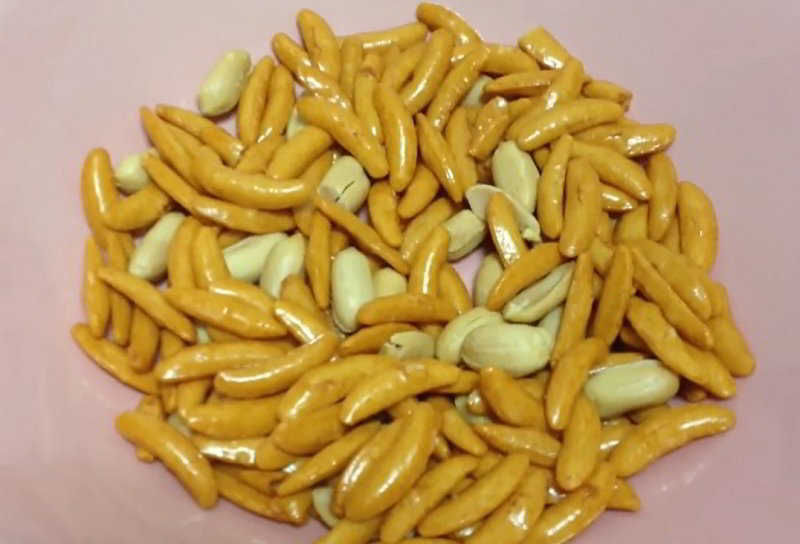
Kaki no tane is a popular Japanese snack food that consists of small, crescent-shaped rice crackers and spicy peanuts. The name "kaki no tane" literally translates to "persimmon seeds," as the rice crackers resemble the shape and color of persimmon seeds. These crunchy and addictive snacks are often enjoyed with a cup of green tea or beer. The rice crackers are made from a mixture of glutinous rice, soy sauce, and spices, which are then shaped and deep-fried until crispy. The spicy peanuts, on the other hand, add an extra kick to the snack with their savory and spicy flavor.
Senbei

Senbei is a traditional Japanese snack food that has been enjoyed for centuries. It is made from rice and comes in various shapes and flavors, making it a versatile and popular dish. The rice is first cooked and then flattened into thin, crispy crackers. The crackers can be baked or grilled, giving them a unique texture. Senbei comes in a wide range of flavors, from savory to sweet. Some popular savory flavors include soy sauce, wasabi, and seaweed, while sweet flavors can include sugar or honey. The crackers are often seasoned with ingredients like sesame seeds, nori (dried seaweed), or chili powder, adding an extra layer of flavor.
Arare
-1706083919.jpg)
Arare is a popular Japanese snack food that consists of small, bite-sized rice crackers. These bite-sized crackers are made from glutinous rice that is shaped into small balls or discs and then toasted or fried until they become crispy and golden brown. The crackers are typically seasoned with soy sauce, mirin (sweet rice wine), and other flavorings like seaweed, sesame seeds, or chili powder to add a savory and umami taste. Arare comes in a variety of shapes, sizes, and flavors, making it a versatile snack that offers a range of tastes and textures. Some variations of arare include colorful and vibrant pieces called "mame arare," which are made by coating the rice crackers with a sweet glaze, and "kaki no tane," which are crescent-shaped crackers mixed with peanuts for a delightful crunch.
Hi-Chew
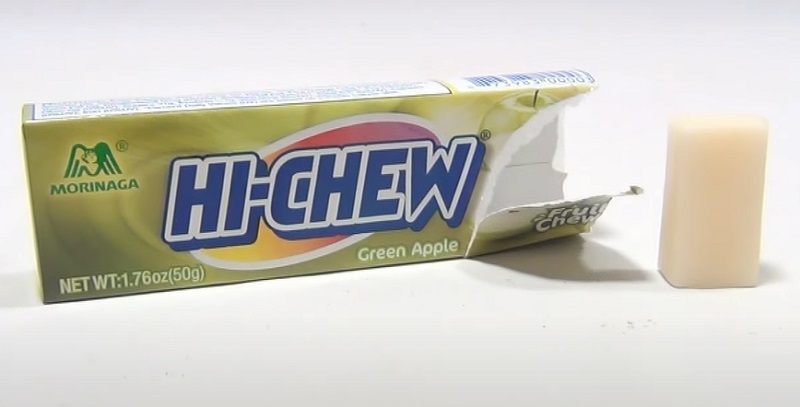
Hi-Chew is a Japanese fruit candy with a unique characteristic. Unlike traditional chewing gum, it is designed to be swallowed, aligning with the cultural taboo in Japan against removing food from one's mouth. The candy's texture combines elements of chewing gum and fruit-flavored candies. Each Hi-Chew piece is individually wrapped in either logo-stamped foil or plain white wax paper. Notably, certain flavors like Strawberry Cheesecake, Yogurt, Cotton Candy, Sweet and Sour Mix, and Superfruit Mix feature an outer colored coating with a white, flavored interior. In contrast, Cola-flavored Hi-Chews are brown in color.
Hello Panda
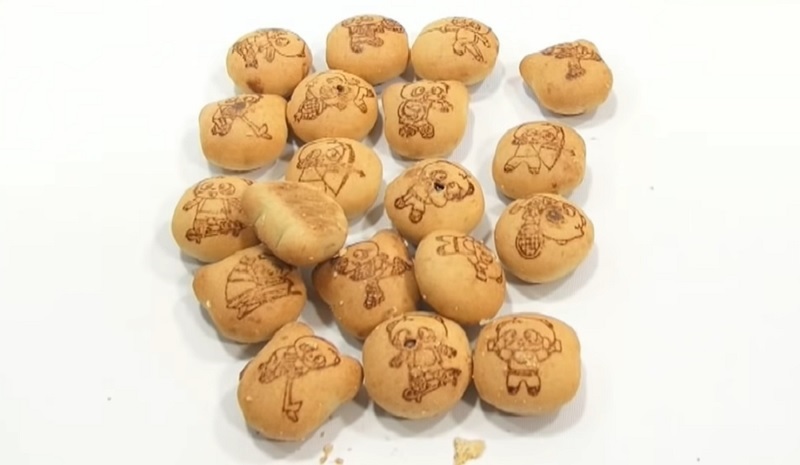
Hello Panda is a popular Japanese snack food that has gained worldwide recognition for its unique and delicious taste. This bite-sized treat consists of crispy biscuit shells that are filled with a creamy chocolate, strawberry, or vanilla-flavored filling. The biscuits are shaped like adorable pandas, with cute panda faces printed on each one. One of the standout features of Hello Panda is the delightful combination of textures. The outer biscuit shell is light and crunchy, providing a satisfying crunch with every bite. Inside, the cream filling is smooth and velvety, adding a burst of flavor that perfectly complements the biscuit.
Tokoroten
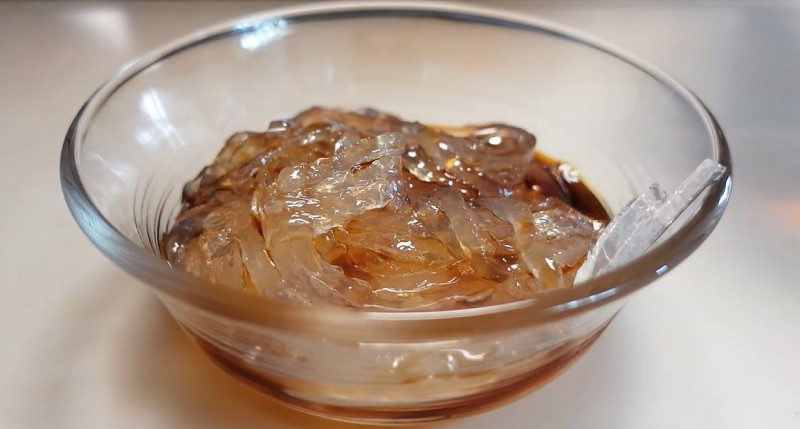
Tokoroten is a popular Japanese snack made from tokoroten jelly, a gelatinous substance derived from seaweed. It is a refreshing and healthy treat that is enjoyed during hot summer months. The dish is typically served cold and has a unique texture that is both chewy and jelly-like. To make tokoroten, a variety of seaweed called tengusa is boiled and then solidified into a gelatinous substance. The jelly is then cut into thin strips or cubes and served with a light soy sauce-based dipping sauce. Sometimes, additional toppings like grated ginger or sesame seeds are added to enhance the flavor. Tokoroten is known for its low calorie and high fiber content, making it a guilt-free snack option.
Umaibo
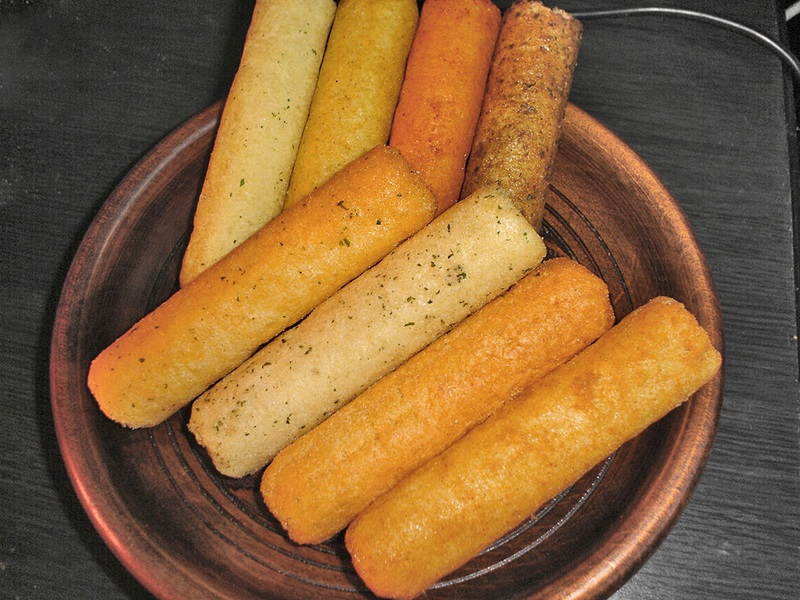
Umaibo, also known as the "delicious stick," is a cylindrical puffed corn snack originating from Japan. Umaibo comes in a variety of flavors, encompassing savory options like salad, mentaiko, takoyaki, and cheese, as well as sweet alternatives such as cocoa, caramel, and chocolate.
Koala's March
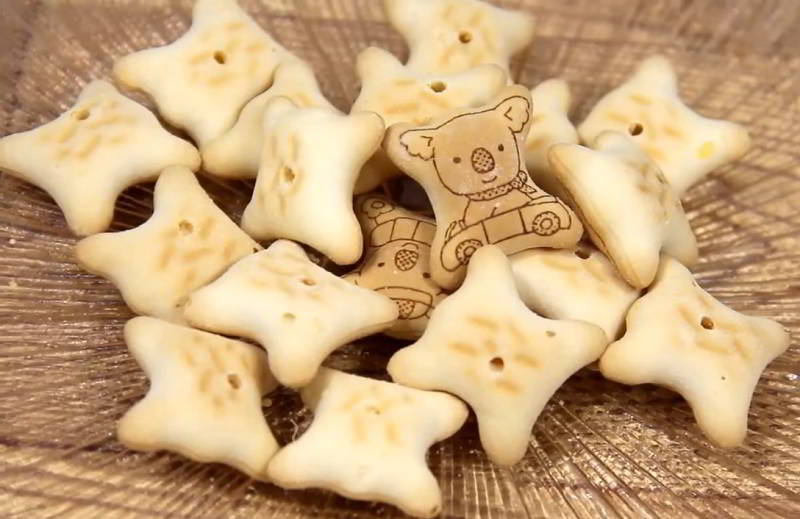
Koala's March is a bite-sized treat which consists of crispy, hollow biscuits shaped like cute koala bears, each with a unique facial expression. The biscuits are filled with a smooth and creamy chocolate or strawberry filling, offering a delightful burst of flavor with every bite. What sets Koala's March apart is its attention to detail. The biscuits are intricately designed, featuring intricate patterns and decorations on their surface, making them visually appealing to both children and adults alike. Each individual snack is wrapped in colorful packaging, adding to the overall charm of the product.
Pretz
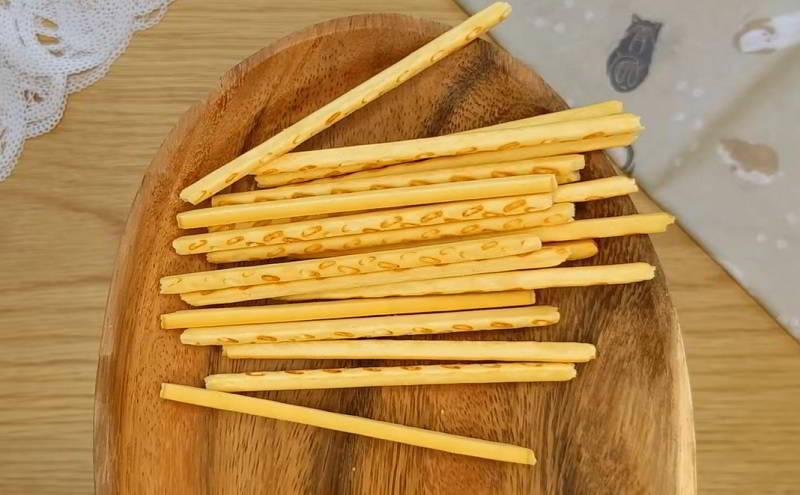
Pretz is a popular Japanese snack food that caters to those seeking a savory and crispy treat. Each box of Pretz contains a generous serving of biscuit sticks, carefully coated with a rich and flavorful seasoning. The assortment of flavors is vast, ranging from classic Japanese favorites like yakitori and takoyaki to more adventurous options like mentaiko and curry. The delicate balance between the crunchy texture of the biscuit sticks and the bold taste of the seasoning is what makes Pretz truly special. It offers a satisfying, umami-filled experience that is perfect for snacking on the go.
Kappa Ebisen
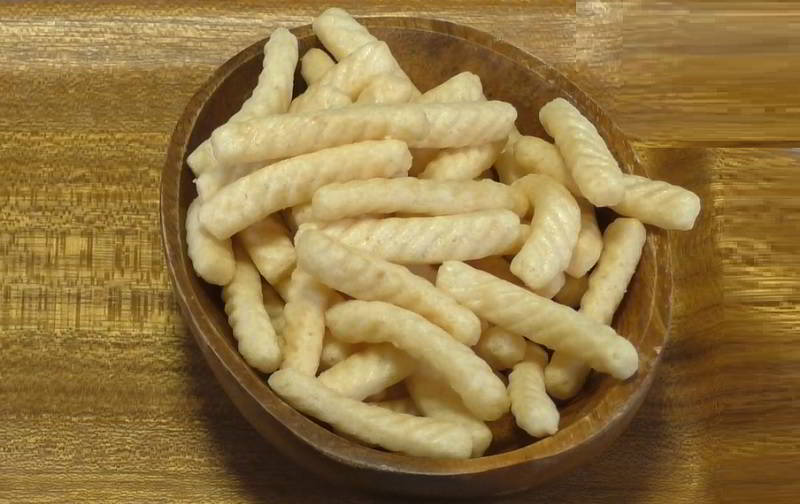
Kappa Ebisen is a popular Japanese snack food made from small, crunchy shrimp crackers. The name "Kappa" refers to the mythical water creature from Japanese folklore, while "Ebisen" signifies the shrimp flavor. These delectable snacks are made by mixing flour, shrimp, and seasonings together to create a dough. The dough is then thinly rolled out and cut into small, bite-sized pieces. These pieces are deep-fried until they become crispy and golden brown. The result is a light and airy texture with a distinct shrimp flavor. The crackers are known for their addictive nature, and it's hard to stop at just a few.
Kenpi

Kenpi refers to candied sweet potato strips that resemble french fries in appearance but offer a distinctively hard and sugary sweetness. To prepare Kenpi, 5 cm strips of raw sweet potato (typically the purple-skinned variety, peeled) are fried in 160-degree Celsius oil until they achieve a golden brown hue and most of the moisture is extracted, resulting in a crisp texture when cooled. Excess oil is drained, and a sugar glaze is created by heating granular sugar, a hint of salt for flavor, and water just shy of the hard boil stage over medium-low heat. This glaze is then poured over the fried sweet potato strips. After separation, the coated strips are placed on a rack, allowing them to drain any excess sugar until they cool.
Kinoko No Yama
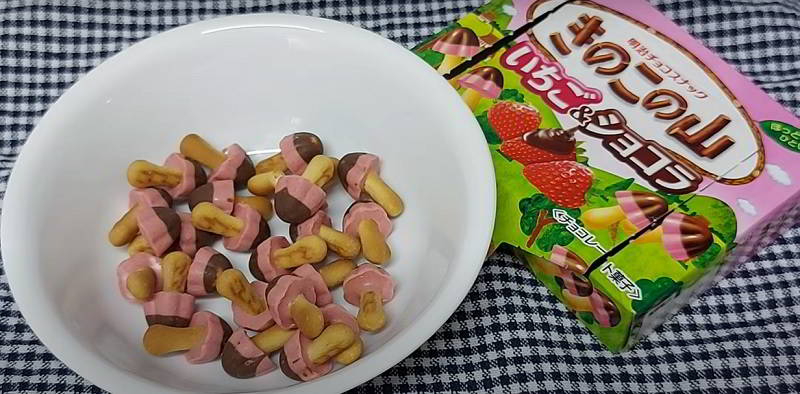
Kinoko no yama, which translates to "mushroom mountain" in English, is a popular Japanese snack food that has gained a cult following both in Japan and abroad. These delightful treats are shaped like miniature mushrooms, with a biscuit stem and a chocolate cap. The biscuit stem provides a satisfying crunch, while the chocolate cap offers a rich and creamy flavor. The chocolate cap is often decorated with tiny white dots to resemble a real mushroom. The taste of the chocolate varies depending on the flavor, with common options including milk chocolate, white chocolate, and matcha (green tea) chocolate.
Agemochi
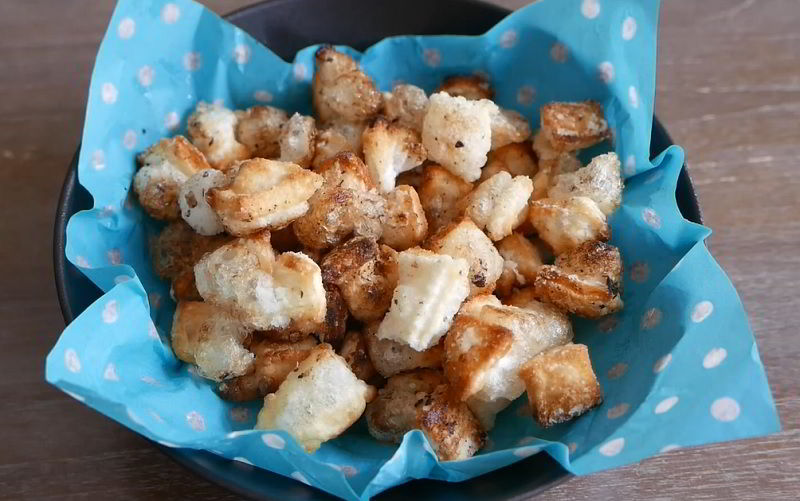
Agemochi is a delicious and popular Japanese snack, made from bite-sized pieces of mochi, a sweet and sticky rice cake, that are deep-fried to perfection. The result is a delightful treat with a crispy exterior and a chewy, gooey interior. Agemochi comes in a variety of flavors and toppings, making it a versatile snack. Some common flavors include soy sauce, green tea, and sweet red bean paste. It is often served with a sprinkle of kinako (roasted soybean flour) or a drizzle of sweet sauce to enhance the taste.
Jagarico
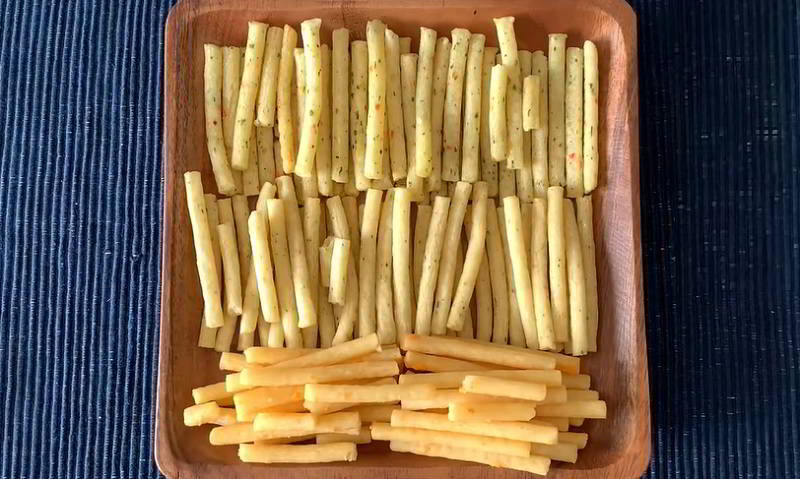
Jagarico is a popular Japanese snack food that has gained a loyal following for its unique and delicious taste. These crunchy potato sticks are a must-try for any snack lover. Each stick is made from thinly sliced potatoes that are cooked to a perfect crispness, giving them a satisfying crunch with every bite. What sets Jagarico Dish apart from other potato snacks is its wide range of flavors. From classic favorites like butter soy sauce and cheese to more adventurous options like consommé and takoyaki, there is a flavor to suit every palate. Each variety is carefully seasoned with a blend of spices and seasonings, creating a burst of savory goodness that is hard to resist. N
Karamucho
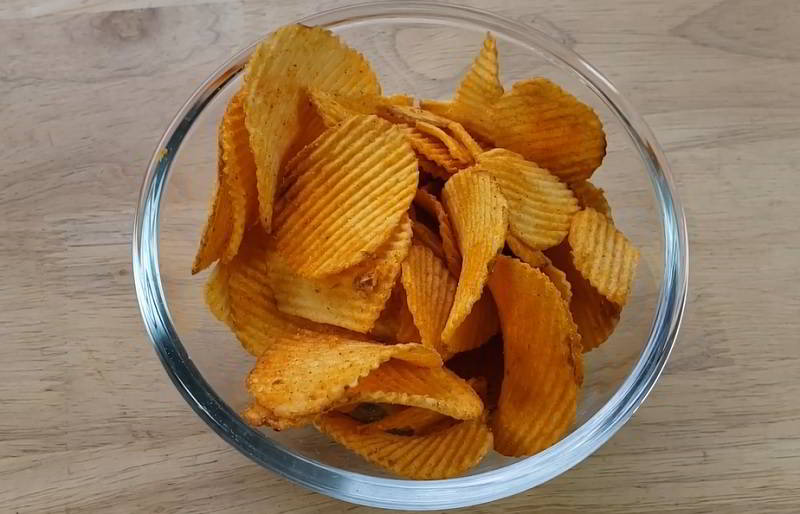
Karamucho is a Japanese snack comprising potato sticks or chips, known for its spiciness by Japanese standards. The name of this flavorful Japanese snack is a clever combination of the Japanese word "Karai," meaning spicy, and the Spanish term "Mucho," which translates to "a lot."
Beika
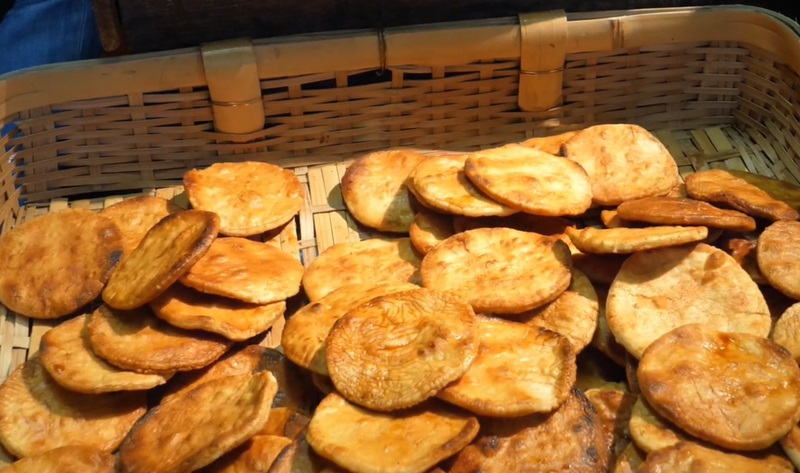
Beika is a type of dry Japanese confectionery made from rice. It is essentially a rice cracker. Beika is categorized into three main types: senbei, arare, and okaki. The key distinction lies in the type of rice flour used, with senbei made from non-glutinous rice flour, while both arare and okaki are crafted from glutinous rice flour.
Senbei, the largest of the three, comes in sweet and savory variations. Savory senbei is often coated with a mixture of soy sauce and mirin before cooking, while sweet senbei may incorporate ingredients like sugar, syrup, egg, and miso. Popular flavors include shoyu senbei (solely soy sauce flavored), okoge senbei (made from puffed rice), matcha senbei, sakura senbei, and nori senbei.
Okaki, the second-largest rice crackers, are made by first preparing mochi rice cakes. The process involves steaming glutinous rice, pounding it into a paste, shaping it into buns, sun-drying for a week, and then cutting to form rice crackers.
Arare, the smallest of the rice crackers, has a rounder shape compared to senbei and okaki, which are typically more circular than spherical.
Big Katsu
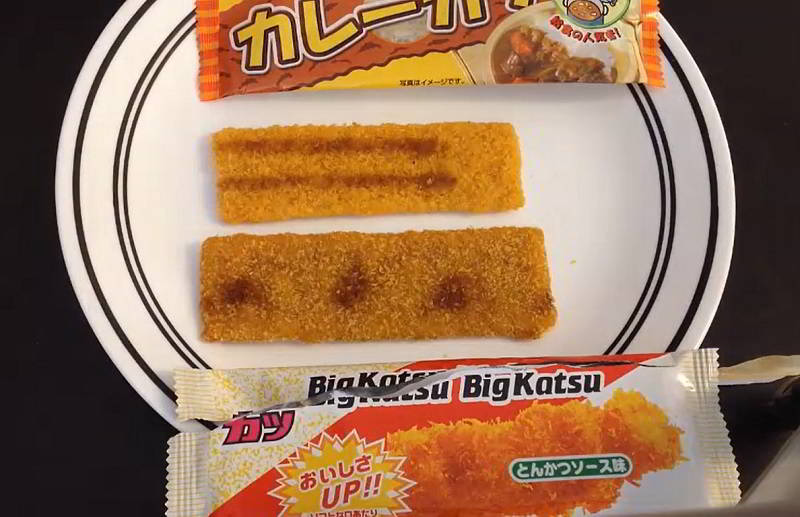
Big Katsu is a Japanese snack that mimics the look and flavor of a breaded pork cutlet, or tonkatsu. However, it is distinct in that it is crafted from shredded fish surimi. The surimi is seasoned and flavored with sauces to create a snack that closely resembles the taste and appearance of tonkatsu, despite being made with fish rather than pork.
Olive no Hana

Olive no Hana is a type of small Japanese rice cracker (arare) infused with the flavor of olive oil. This assortment of crackers offers various savory tastes, including squares of edible kelp (kombu) and dried, thick edible seaweed (nori).
Bakauke

Bakauke is a Japanese rice cracker with a distinctive banana shape, available in a variety of flavors. This assortment includes curry, cheese, corn soup, soy sauce with sesame, and soy sauce with aonori seaweed.
Bōkun Habanero
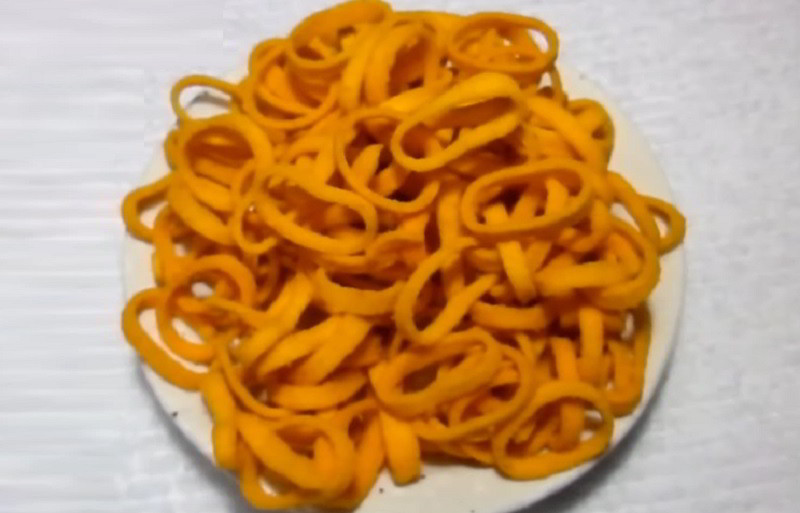
Bokun Habanero is the brand name of a Japanese snack food. The name means "Tyrant Habanero", a reference to the habanero pepper, which is one of the world's hottest chili peppers. Its name derives from a play on words linking "habanero" with "Tyrant Nero". The snack consists of potato rings, and is moderately spicy by Japanese standards.


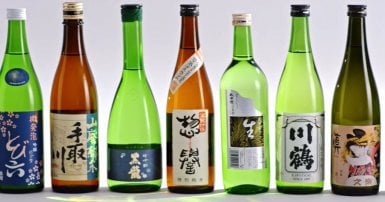
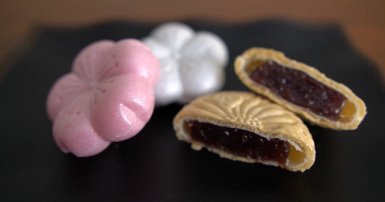
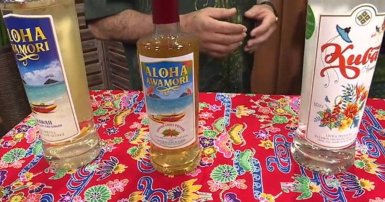
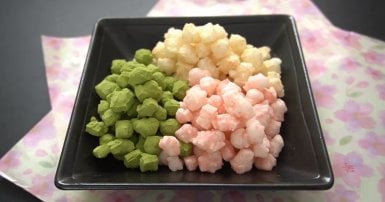
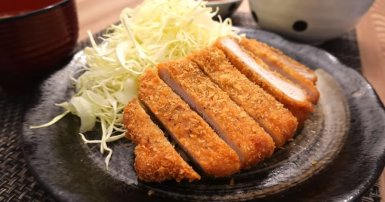
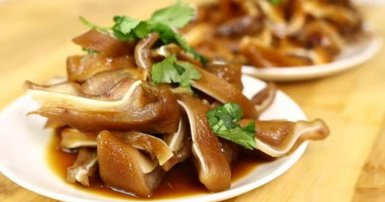
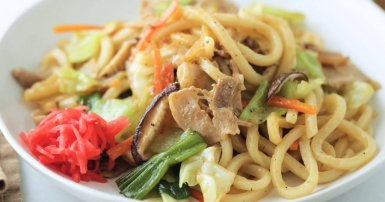
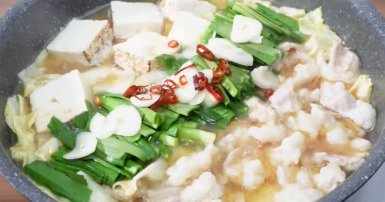

-1709813013.jpg)


